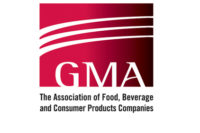Global snacking company Mondelez International says it exceeded nearly all of the environmental footprint goals it set for 2015 to reduce packaging, greenhouse gas emissions, waste and water usage.
According to the company’s Call For Well-being 2015 Progress Report, it increased portion control options and whole-grain content across the company’s product portfolio.
“Our growth is directly linked to enhancing the well-being of our planet, the lives of the people who make and enjoy our products, and the communities we serve,” says Irene Rosenfeld, chairman and CEO. “In the years since we launched our Call For Well-being platform, we've made steady progress in delivering against our commitments. Our solid 2015 results, along with our new sustainability goals for 2020, advance our commitments and support our ambition to be the global leader in well-being snacks.”
Key highlights of the report include:
Sustainability
- Reduced greenhouse gases from manufacturing by 19 percent per ton.
- Reduced energy in manufacturing by 11 percent per ton.
- Eliminated 107 million pounds (48,500 tons) of packaging.
- Reduced incoming water usage by 17 percent per ton.
- Reduced net waste by 70 percent per ton.
- Achieved 68 percent of 2015 production volume from zero-waste-to-landfill sites.
- On target to sustainably source all cocoa.
Well-Being Snacks
- Achieved goal to increase individually wrapped portion-control options by 25 percent.
- Achieved goal to increase whole-grain content by 25 percent — five years ahead of goal.
- Better Choice options now account for 25.5 percent of the company's revenue.
- At the end of 2015, sodium and saturated fat declined across entire portfolio by 1 percent and 2 percent, respectively.
- On target to have global front-of-pack calorie labeling by 2016.
Safety
- All 150 of the company's own manufacturing facilities were certified against the Foundation for Food Safety Certification 22000.
- On target to achieve world-class safety performance. In 2015, achieved a 13 percent year-over-year reduction in lost time injury frequency rate and a 21 percent reduction in Total Incident Rate for all employees.





